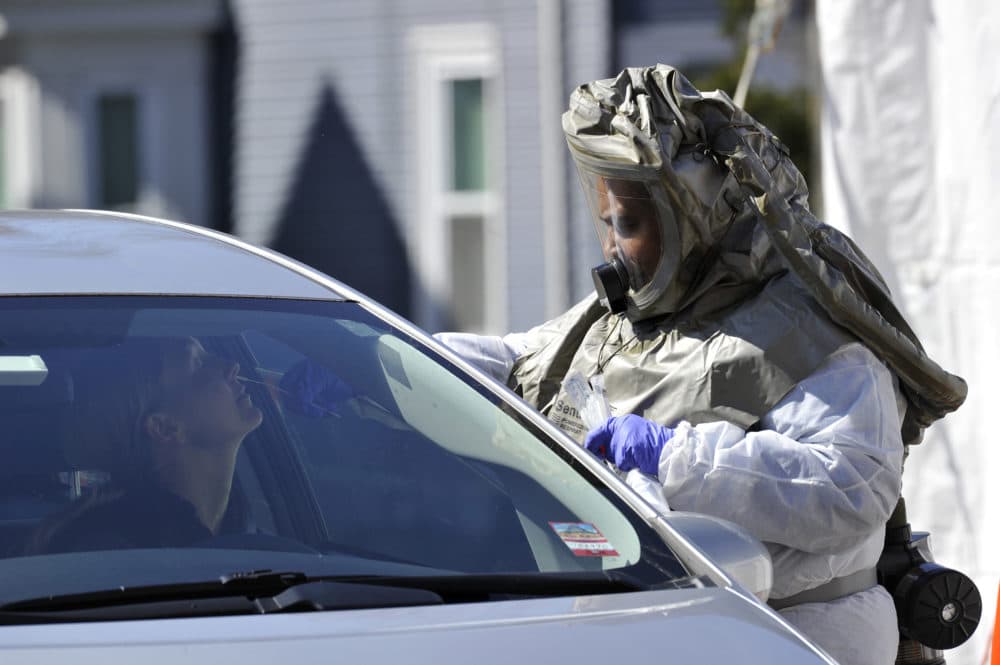Advertisement
Why Some Coronavirus Tests Show A False Negative

As President Trump and governors across the nation spar over when and how to safely reopen the country, one crucial part of the equation is testing.
But as more Americans are tested for the coronavirus, concern about the accuracy of those tests is growing. False negatives could distort our understanding of where we stand in the crisis.
Once a sample is collected from a patient at a doctor’s office or a drive through testing center, the sample is transported to a centralized laboratory, says Omai Garner, who directs clinical microbiology testing for UCLA Health.
If there’s any viral RNA in the sample, it’s taken out through a process called viral extraction, he says. Then, if a technique called RT-PCR finds specific COVID-19 viral RNA, the test will say the patient is positive.
The prevalence of false negatives depends on the part of the patient population being tested, he says. At UCLA, he says false negatives are uncommon among mildly to moderately symptomatic patients within the first five to seven days of infection.
“Outside of that, we really don't know,” he says. “Until you actually test, let's say, a large asymptomatic population, you really don't quite understand what the false negative rate is going to be.”
Doctors look at the test through two lenses: analytical and clinical sensitivity. Analytical sensitivity measures how well the test can find the virus in a sample. The limit of detection for tests at UCLA is 500 copies of virus per milliliter of fluid — meaning if the virus is in a sample, he says “the test will find it.”
Clinical sensitivity gets at questions such as whether the nasopharyngeal swab went far back enough to pick up the virus or if the virus is at a detectable stage, he says.
“We know our test is sensitive for people who are in acute symptomatic disease in the first five to seven days,” he says. “But outside of that window — and especially in the asymptomatic population or the very mildly symptomatic population — this is where we're seeing what we call false negatives because there isn't enough virus to be found by the test.”
Advertisement
Garner hopes to incorporate antibody blood tests for asymptomatic or mild cases that show whether the patient has been exposed to the virus. But these blood tests show positives later in the disease course, from seven to 12 days after someone is infected.
Now, UCLA is conducting antibody tests among its health care workers. Antibody testing won’t be widely available until June or July, he says, “meaning people won't have to wait a very long time for the result and they can get back to work.”
“We really need to test a large amount of the population to see who's been exposed to the virus,” he says.
Some patients may wait 15 minutes for the results of their COVID-19 test, while it can take a week for others. Garner says that’s because of infrastructure and availability issues.
At UCLA, he says all patients receive testing results within 24 hours — while hospitalized patients find out in as soon as four to six hours.
“But that's really because we have the availability of tests near to where the patient is. In a lot of places in this country, unfortunately, there are not laboratories and tests that are available near to the patient,” he says. “And this is why you're seeing extended wait times past seven days for people to be able to get a result.”
Ciku Theuri produced and edited this interview for broadcast with Tinku Ray. Allison Hagan adapted it for the web.
This segment aired on April 14, 2020.

